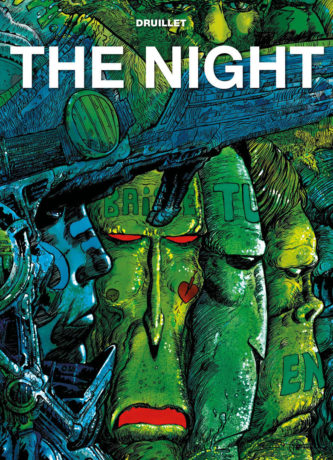The books of 2018? There’s really not much to say, outside my usual observation that the really good stuff often lurks outside the mainstream. But then again, last year quite a few worthy books were in fact put out by mainstream publishers, most of those books, as has been the case in the past few years, being film-related. Indeed, my fiction reading, you’ll find, was somewhat scant in ‘18, despite a number of promising novels (including BAD MAN by Dathan Auerbach, PERFECT BLUE: COMPLETE METAMORPHOSIS by Yoshikazu Takeuchi, SISYPHEAN by Dempow Torishima and ALTERNATE ROUTES by Tim Powers)—hopefully I’ll get to them next year. For now, though, let’s take a look back at the books of 2018, starting with…
FICTION
 A GRAVEYARD VISIBLE by STEVE CONOBOY (Lodestone Books) is, I feel, the book A MONSTER CALLS should have been. As in that overrated 2011 tome, this one is a young adult novel involving a boy dealing with the death of a loved one, as well as some decidedly more esoteric, supernatural occurrences. In A GRAVEYARD VISIBLE, though, author Steve Conoboy takes his narrative in unexpected directions, incorporating a graveyard whose mass is steadily increasing.
A GRAVEYARD VISIBLE by STEVE CONOBOY (Lodestone Books) is, I feel, the book A MONSTER CALLS should have been. As in that overrated 2011 tome, this one is a young adult novel involving a boy dealing with the death of a loved one, as well as some decidedly more esoteric, supernatural occurrences. In A GRAVEYARD VISIBLE, though, author Steve Conoboy takes his narrative in unexpected directions, incorporating a graveyard whose mass is steadily increasing.
That latter occurrence is discovered by Caleb, a young boy living in a house adjacent to said graveyard. Caleb spends his days obsessively measuring the yard, and finds that it is in fact growing progressively larger despite the fact that it seems to occupy the same amount of physical space it always did. Caleb’s mother is among the corpses interred in the graveyard, hence his obsession with it. Also residing in the area is Misha, a young girl with her own problems, foremost among them some profoundly eccentric relatives; among other oddities, her elders are seeking to resurrect a long-dead woman, a gambit in which Caleb becomes unwittingly entangled.
The novel’s latter half may be a bit overly involved, juggling as it does a number of characters (many of them undead), each with his/her/its own complicated backstory, in addition to diary entries made years earlier by Caleb’s grandfather. But the whole thing is never less than eminently readable, with prose that’s poetic and stylized without ever seeming the slightest bit dense or self-conscious. The ending for its part is pitch-perfect, bringing this plot-heavy account back to its thematic starting point as a surreal rumination on death, grief and the tragic inevitability of both.
JOHN AJVIDE LINDKVIST has been called “Sweden’s Stephen King,” and his latest novel I AM BEHIND YOU (St. Martin’s Press) only furthers the comparison, with a conception similar to that of King’s UNDER THE DOME. The major difference is that King made clear delineations between good and bad people, whereas in Lindqvist’s far less forgiving universe everyone is susceptible to insanity and murder.
The situation is this: four families, caravanning at a remote campsite, awaken one morning to find that they’re situated in a vast expanse of grass that stretches as far as the eye can see. The characters include two children, a bickering married couple and a pair of closeted male farmers. It soon becomes clear that these people aren’t alone, as a quartet of dark figures emerge from the distance, appearing in different guises that correspond to the characters’ individual fears and prejudices. This inspires elaborate flashbacks in which horrific secrets are uncovered, leading inexorably to paranoia and madness.
Powerful stuff, although I AM BEHIND YOU is not quite the genre masterpiece Lindqvist was clearly aiming for. It suffers from a lack of narrative momentum, which is especially jarring given the expansive 405 page length. Another problem, for non-Swedish readers at least, is with the innumerable references to Swedish culture and politics; the entire story, in fact, seems to have been intended as a commentary on modern-day Sweden. But the power of Lindqvist’s present tense prose (ably translated by Marlaine Delargy), with its eye for quirky character-based detail and pitiless insight into the darker corners of the human psyche, is fully evident in any language.
THE BOOK OF IMPRUDENT FLORA (Gingko Press) follows the pictorial wonder A JOURNEY IN THE PHANTASMAGORICAL GARDEN OF APPARITIO 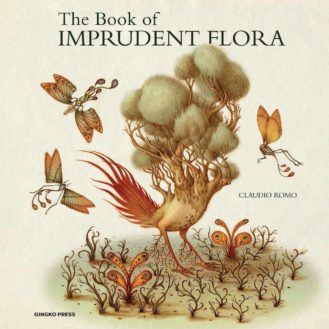 ALBINUS (see below), written and illustrated by Chile’s talented CLAUDIO ROMO. THE BOOK OF IMPRUDENT FLORA follows suit, taking the form of a glossary of “imprudent flora” found on “Spectacular Isle”—as the island is christened by Lazaro do Sahagun, a botanist who stumbles upon the place during an expedition in the Pacific Ocean, and leaves behind diary entries detailing the many bizarre plants he finds there.
ALBINUS (see below), written and illustrated by Chile’s talented CLAUDIO ROMO. THE BOOK OF IMPRUDENT FLORA follows suit, taking the form of a glossary of “imprudent flora” found on “Spectacular Isle”—as the island is christened by Lazaro do Sahagun, a botanist who stumbles upon the place during an expedition in the Pacific Ocean, and leaves behind diary entries detailing the many bizarre plants he finds there.
Those plants include the Specular Ambrosia, which inspires kaleidoscopic hallucinations in anyone who ventures near it, and the Peregrine Aloysia, which produces a single fruit that when plucked causes it to die instantly; thus it’s developed defenses that include a thick armor of thorns and roots that double as feet. There’s also the Colossal Cassiopea, a large cactus-like plant with needles that can be launched great distances.
The superlatives lavished on this book have been a bit overwrought (“a codex for the new millennium, full of the power of discovery and the sorrow of loss”), but it is a pleasing concoction. Particularly noteworthy are Claudio Romo’s wondrous illustrations, which in their boldness and bizarrie rank with the work of such masters of fantastic illustration as Heironymous Bosch and Luigi Serafini.
EXPLORING DARK FICTION #1: A PRIMER TO STEVE RESNIC TEM (Dark Moon Books; 2017) is the first in a series of “Exploring Dark Fiction” primers edited by ERIC J. GUIGNARD. As the title portends, the subject of this one is Steve Resnic Tem, six of whose stories are included, along with a nonfiction piece, an interview, extensive commentary by author/editor Michael Arnzen and an exhaustive bibliography of Tem’s 400-plus published pieces.
Sophisticated and surreal, Tem’s fiction gives literary horror a good name. Traditionally scary it isn’t, something Tem owns up to in his 1992 essay “The Subject Matter of Horror,” which is included here. In it Tem elaborates on his ideas about what horror is, distinguishing it from emotions like anger, fear and morbidity, which apparently fuel most “unreadable” horror fiction.
Of the six stories the standouts are “Hungry,” which wreaks an elegantly gruesome twist on the age-old theme of returning to the womb; “The Giveaway,” which harkens back to the dark morality tales that comprised old school children’s literature in its account of a girl and her stern father, who runs his household with an iron fist and doles out extremely harsh punishments to anyone who disobeys him; and “In These Final Days of Sales,” a magnificently realized bit of sustained surrealism evincing a refined brand of apprehension that, of all the stories here, best illustrates Tem’s points in “The Subject Matter of Horror.”
Michael Arnzen’s commentaries are a bit too academic for my tastes, but intelligent and informative nonetheless. In fact, in his comments on “Rat Catcher,” Arnzen may get to the heart of what truly renders Tem’s fiction distinctive in the observation of his talent for “making us wonder what is and is not reality—what is and is not dream. Tem reminds us that, in fiction, these boundaries are arbitrary—and sometimes the root of the problem.”
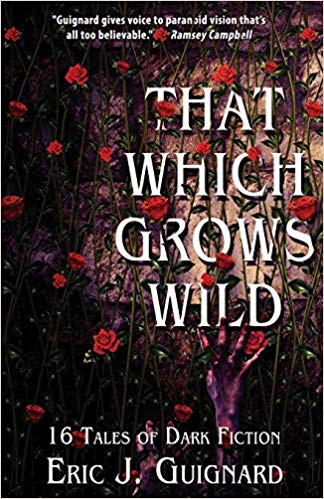 THAT WHICH GROWS WILD (Cemetery Dance) is the debut anthology of ERIC J. GUIGNARD (editor of the Steve Resnic Tem book profiled above), and it’s a beauty. The subject matter of these stories ranges from Spontaneous combustion (in “A Case Study in Natural Selection and How It Applies to Love”), werewolves (“Last Night…”), a supernaturally endowed doll (“A Journey of Great Waves”), mutant bugs (“Certain Sights of An Afflicted Woman”) and a sasquatch (“A Quaint Ol’ Bigfoot Tale”).
THAT WHICH GROWS WILD (Cemetery Dance) is the debut anthology of ERIC J. GUIGNARD (editor of the Steve Resnic Tem book profiled above), and it’s a beauty. The subject matter of these stories ranges from Spontaneous combustion (in “A Case Study in Natural Selection and How It Applies to Love”), werewolves (“Last Night…”), a supernaturally endowed doll (“A Journey of Great Waves”), mutant bugs (“Certain Sights of An Afflicted Woman”) and a sasquatch (“A Quaint Ol’ Bigfoot Tale”).
Then there are those stories that don’t fit into any particular category. The wistful and poetic “Vancouver Fog” is once such tale, as is the completely bizarre “Dreams of A Little Suicide,” told from the point of view of a dwarf actor playing a munchkin on the set of THE WIZARD OF OZ—a story that takes place in large part after said dwarf has committed suicide.
In all cases the tales are marked by elegant and unforced prose that regardless of how fanciful the subject matter may be is always rooted in recognizable emotions. That’s evident in the hard-won wisdom of “Last Days of the Gunslinger, John Amos,” a character living in an apocalyptic landscape who observes that “Whereas once a man’s life wasn’t worth a nickel to him, every living person now had become a precious blessing.” Such mature insight is rare in modern horror fiction; even rarer is the ability to render it in page-turning fashion. THAT WHICH GROWS WILD handily accomplishes both attributes, being one of 2018’s standout books.
NON-FICTION
My favorite book, fiction or non, of 2018? That would be SPACE ODYSSEY: STANLEY KUBRICK, ARTHUR C. CLARKE, AND THE MAKING OF A MASTERPIECE by MICHAEL BENSON (Simon & Schuster), which can lay claim to being the definitive print resource on Stanley Kubrick’s 2001: A SPACE ODYSSEY.
The film’s inception is covered through interviews, both new and archival, with Kubrick, screenwriter Arthur C. Clarke, special effects whiz Douglas Trumbull, actors Keir Dullea and Gary Lockwood, and virtually everyone else involved. It begins in early 1964, with Clarke receiving a letter from Kubrick about his desire to create a “really good science fiction movie,” setting off a laborious four year saga that Michael Benson details step by arduous step.
The production was a time-consuming, energy-draining ordeal that pushed everyone involved to the limits of their endurance, and resulted in a film that took several decades to be properly recognized as the ground-breaking cinematic masterwork it is. We learn here that a sincere attempt at depicting an alien life form was made, but ultimately discarded; that location scouting the desolate scenery of the opening scenes involved a death-defying desert trek; and that the film was heavily inspired, unexpectedly enough, by Ingmar Bergman’s violent period piece THE VIRGIN SPRING, a film that like 2001 was marked by highly symmetrical compositions and extremely sparse dialogue.
Throughout, Benson can’t help but fawn over Kubrick’s intelligence and ambition, but he’s also quite frank about the great man’s more unpleasant predilections. This is all contained in around 450 extremely well-ordered pages that answer virtually every question one might have about 2001: A SPACE ODYSSEY, while flummoxing those of us who thought we knew everything there was to know about it.
For David Lynch fans there’s certainly no shortage of biographical material, either in filmic (PRETTY AS A PICTURE, LYNCH, DAVID LYNCH: THE ART LIFE)  or print (IMAGES, LYNCH ON LYNCH, CATCHING THE BIG FISH) format. ROOM TO DREAM, co-written by KRISTINE McKENNA (and published by Random House) stands out due to the fact that, simply, it’s the most comprehensive Lynch bio to date, a hefty 500-plus page doorstop of a book.
or print (IMAGES, LYNCH ON LYNCH, CATCHING THE BIG FISH) format. ROOM TO DREAM, co-written by KRISTINE McKENNA (and published by Random House) stands out due to the fact that, simply, it’s the most comprehensive Lynch bio to date, a hefty 500-plus page doorstop of a book.
Given the nature of its subject and his artistic output (which is to say: weird), it’s appropriate that ROOM TO DREAM has an extremely eccentric construction. It’s divided into two parts, with each chapter containing a straightforward biographical sketch by McKenna of a portion of David Lynch’s life followed by Lynch’s own take on the same events, which often directly contradict the recountings of McKenna and her interviewees. The latter include a number of Lynch’s longtime friends, as well as his daughter Jennifer and innumerable actors and technicians from his films.
Flightiness is one of the many Lynch attributes we learn about in these pages. It seems he has a bad habit of starting projects and then quickly losing interest, which is what happened with his long-gestating script for RONNIE ROCKET, and also season two of TWIN PEAKS. He does, however, seem to have really taken to transcendental meditation. Lynch began meditating in 1973 and has continued to do so ever since, leading to the creation of the David Lynch Foundation for Consciousness-Based Education and World Peace.
Overall this is a worthwhile tome whose biggest failing is that, simply, it can’t hope to fully convey the life and output of its very complex subject. As Lynch himself acknowledges toward the end, this book is “just the tip of the iceberg; there’s so much more, so many more stories.” I doubt any book could properly contain all those stories, and until one does ROOM TO DREAM will stand as the definitive David Lynch profile.
DON COSCARELLI is the writer-director of PHANTASM, THE BEASTMASTER and eight other features. If that output sounds a bit unprolific given the fact that Coscarelli’s filmmaking career spans 40-plus years, it just goes to prove that this guy is indeed a “true indie,” working in an industry where funding is hard to come by and longevity even harder. TRUE INDIE (St. Martin’s Press) is Coscarelli’s long-in-coming autobiography, and it’s a good one.
Coscarelli’s filmmaking odyssey began in the early 1970s, when as a teenager he made short films. This led to the feature-length teen drama JIM THE WORLD’S GREATEST, released by Universal Pictures in 1975, when Coscarelli was 19. That film was not a success, so Coscarelli elected to turn to more marketable fare—specifically: “I loved horror films + horror films make money = I will make a horror film. Simple arithmetic.” The result was 1979’s PHANTASM, which remains Coscarelli’s signature achievement.
PHANTMASM’S success did not, however, make things any easier for Coscarelli. Survival in the independent film sphere is always difficult, as proven by the many stalled projects Coscarelli pursued in the 1980s and 90s. An unexpected high point occurred in 2003, with the release of Coscarelli’s Elvis-versus-an-extraterrestrial-mummy movie BUBBA HO-TEP, although its distribution, shepherded by Coscarelli himself, was quite arduous.
TRUE INDIE, finally, is worthwhile reading both for PHANTASM fans and anyone interested in independent filmmaking, being gossipy, informative and, best of all, damned entertaining. It is, in short, a lot like one of Mr. Coscarelli’s better films.
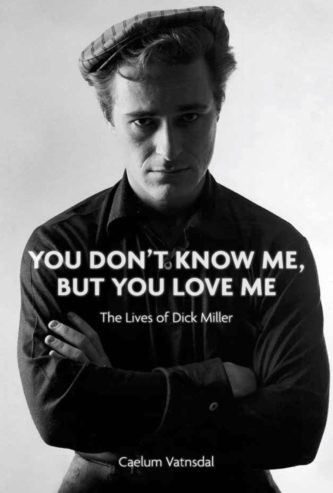 YOU DON’T KNOW ME, BUT YOU LOVE ME (ARP Books) is the first-ever biography of actor/American treasure Dick Miller—sadly, now the late Dick Miller (I literally just learned of his January 23, 2019 demise)—and so a vital resource for all film buffs. You’ve doubtless seen Mr. Miller onscreen, as he’s been a fixture of the American film scene since the 1950s. His lead roles have been few (although potent: Miller headlined Roger Corman’s legendary anti-classic A BUCKET OF BLOOD), with the majority of his screen appearances confined to walk-on parts in which he, with his terrifically gruff, working-class demeanor, never failed to make an impression.
YOU DON’T KNOW ME, BUT YOU LOVE ME (ARP Books) is the first-ever biography of actor/American treasure Dick Miller—sadly, now the late Dick Miller (I literally just learned of his January 23, 2019 demise)—and so a vital resource for all film buffs. You’ve doubtless seen Mr. Miller onscreen, as he’s been a fixture of the American film scene since the 1950s. His lead roles have been few (although potent: Miller headlined Roger Corman’s legendary anti-classic A BUCKET OF BLOOD), with the majority of his screen appearances confined to walk-on parts in which he, with his terrifically gruff, working-class demeanor, never failed to make an impression.
Canada’s CAELUM VATNSDAL is up to the challenge of rendering Miller’s varied and eventful life story in book form. YOU DON’T KNOW ME, BUT YOU LOVE ME is exhaustively researched, and contains extensive recollections by virtually everyone who’s ever worked with Miller, including Roger Corman, Jack Nicholson and Martin Scorsese. Unbelievably enough, it also contains information on nearly every one of Miller’s 180 film and television appearances, including productions (such as PULP FICTION) from which he was cut.
Miller’s initial performing career was almost exclusively with Corman, who made sure to find a part for his friend in seemingly every movie he made in the 1950s and ‘60s. This had the effect of preventing Miller from ever attaining any sort of stardom, as he never really bothered to audition for anyone else. Yet he gained a sizeable following as the years went on, becoming a staple of Fangoria magazine and in the films of Joe Dante.
The author makes no secret of his Miller fanaticism throughout. This makes, I suppose, for a somewhat one-sided and overly adulatory book, but I’m a Miller fanatic myself, and so won’t complain too much!
I wouldn’t exactly call myself a fan of the late Robin Williams, but I did literally grow up watching him, and have long been curious about the whys and hows of his 2014 suicide. ROBIN (Henry Holt), which proclaims itself the most comprehensive Williams bio in existence, offers an engrossing portrait of its subject. Author DAVE ITZKOFF paints Williams as a vastly intelligent but deeply insecure man whose near-psychotic wit and affability masked a rather profound social awkwardness.
One fact I learned here that I didn’t already know was that Williams, who always gave off a staunch everyman vibe, was a child of wealth and privilege, being the son of a high ranking Ford executive. Williams still had to claw his way up through the ranks of the unforgiving stand-up comedy world of the 1970s, which led to scattered television and film appearances, and his breakthrough role in the hit sitcom MORK AND MINDY. It was then, alas, that the drug and alcohol addiction that would torment Williams throughout the remainder of his life first took hold.
Movie stardom followed, with Williams’s turn in GOOD MORNING VIETNAM launching him into the front ranks of American actors, a position solidified in 90s-era hits like ALADDIN and MRS. DOUBTFIRE. Things grew dark in the 00s, as Williams’s film career bottomed out, his health declined and his addictions got the better of him. His final months, as revealed here, were especially painful, finding him beset with increasing apprehension and paranoia that reached its apex on August 11, 2014, when Mr. Williams put a permanent end to it all.
He was misdiagnosed with Parkinson’s disease, but it was later disclosed that Robin Williams actually suffered from diffuse Lewy body dementia, a degenerative brain condition that causes extreme mood swings and hallucinations. Perhaps it’s for the best that he checked out when he did, as his brand of comedy, which relied heavily on ethnic stereotypes and funny accents, would probably not have gone over too well in today’s ultra-sensitive political climate. Williams did at least leave behind a wealth of material for us to remember him by, with this book making for a fine capper to a rich, if incomplete, showbiz legacy.
REBEL: MY LIFE OUTSIDE THE LINES (William Morrow) is a tome that, in its very title, really throws down the gauntlet. Any book called REBEL has a lot to 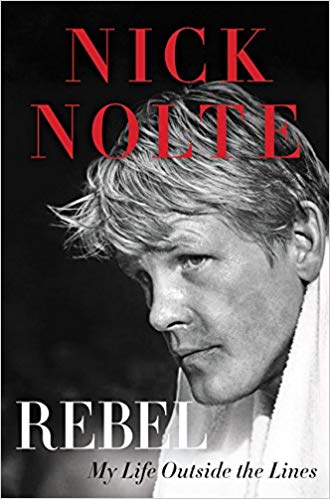 live up to, and the good news is that actor NICK NOLTE very nearly succeeds in doing so, as based on what he writes here he is indeed a rebel in every sense of the word. You know Nolte as the star of flicks like THE DEEP, 48 HOURS, DOWN AND OUT IN BEVERLY HILLS and many others. His approach to his craft is laid out in these pages, in reply to a claim about how Robert Redford “does a couple of studio movies and then does one for himself”—according to Nolte, “I’m doing one for myself now, and next I’m going to do one for myself, then after that I’ll do one for myself, too.”
live up to, and the good news is that actor NICK NOLTE very nearly succeeds in doing so, as based on what he writes here he is indeed a rebel in every sense of the word. You know Nolte as the star of flicks like THE DEEP, 48 HOURS, DOWN AND OUT IN BEVERLY HILLS and many others. His approach to his craft is laid out in these pages, in reply to a claim about how Robert Redford “does a couple of studio movies and then does one for himself”—according to Nolte, “I’m doing one for myself now, and next I’m going to do one for myself, then after that I’ll do one for myself, too.”
It all started, we learn, when Nolte had a “crack up” in his early twenties after the collapse of his intended football career and much extreme partying. Acting offered an ideal respite, but it took some time for Nolte to fully realize his potential—until his mid-thirties, in fact, when he appeared to great acclaim in the ABC TV movie RICH MAN, POOR MAN. There was no slowing down from there as Nolte’s acting career took off, despite some questionable decisions (such as blowing off the title role in SUPERMAN: THE MOVIE because he insisted on playing the character as “schizophrenic”) and a love of partying that has yet to abate.
Yes, this book contains plenty of drug-taking (Nolte being a quintessential child of the sixties), although, as is the custom these days, it’s quite demure about its subject’s sexcapades, with Nolte discussing his major relationships at some length while carefully avoiding any mention of anonymous or uncommitted hook-ups (although those things are very strongly implied). He also includes a goodly amount of straight-up gossip, such as the claim that Joanna Cassidy was cold to him on the set of UNDER FIRE because she was banging director Ridley Scott, and a tidbit about Edward Norton being such an egomaniacal pain in the ass that Nolte was moved to quit an early-00s film the two were working on.
Overall I feel REBEL could have been a bit more expansive, with its 256 pages being far too scant to properly document Nick Nolte’s varied life and career. It’s definitely not boring, though.
HANCOCK ON HANCOCK (BearManor Media) is the first and only in-depth account of the life and films of director John Hancock. Consisting of Hancock’s own thoughts on his career, annotated by MICHAEL DOYLE, it contains in-depth discussions of his films, which include classics like LET’S SCARE JESSICA TO DEATH and BANG THE DRUM SLOWLY, along with the criminally neglected drama WEEDS and the kiddie classic PRANCER. Yet even more intriguing, I’d argue, are the chapters on Hancock’s many unmade films, as well as WOLFEN and SIX MILLION WAYS TO DIE, which he took over after their respective helmers Michael Wadleigh and Hal Ashby were let go. Thus we’re given a fully rounded portrait of filmmaking in Hollywood, which involves a lot of grunt work and windmill chasing in addition to the actual making of movies.
Hancock for a time appeared set to attain the heights of his contemporaries Steven Spielberg, Francis Ford Coppola and Martin Scorsese, but fate had other plans. After being fired from JAWS 2 after a month of shooting Hancock was plagued by a string of unsuccessful features and stalled projects. Most damaging of all was the loss of his Malibu home in a 1993 brushfire, which inspired him and his wife to relocate to Laporte, Indiana, where Hancock made three low budget films: 2000’s A PIECE OF EDEN, ‘01’s SUSPENDED ANIMATION and ‘15’s THE LOOKING GLASS.
Hancock’s revelations are admirably unsparing, being quite frank about his own failings and those of his collaborators. His perseverance in the face of obstacles that would have broken most people is salutary, as is his unwavering commitment to his own artistic principles. Yet looking over Hancock’s filmography there’s a definite feeling of missed opportunity; ten features is nothing to sneeze at (it beats George Lucas by four and Andrei Tarkovsky by three), but it’s clear that Hancock was and is capable of far more.
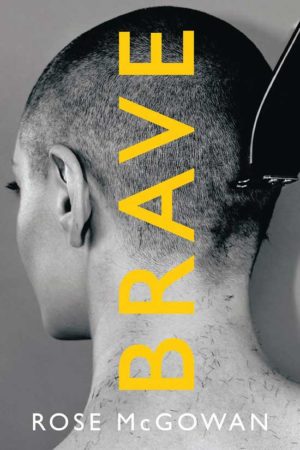 In recent years ROSE McGOWAN has gone from being a semi-famous actress, in films like JAWBREAKER and GRINDHOUSE, to a passionate feminist crusader. Recently she became one of the focal points of the #MeToo movement, although her increasingly unhinged behavior has put that status in jeopardy. The HarperCollins published memoir BRAVE provides an explanation for her disordered mental state.
In recent years ROSE McGOWAN has gone from being a semi-famous actress, in films like JAWBREAKER and GRINDHOUSE, to a passionate feminist crusader. Recently she became one of the focal points of the #MeToo movement, although her increasingly unhinged behavior has put that status in jeopardy. The HarperCollins published memoir BRAVE provides an explanation for her disordered mental state.
It all began in her childhood, spent in the Italy-based Children of God cult, in which poor Rose was subjected to all manner of abuse. With the help of her father McGowan escaped to America, where she was shuttled back and forth between her divorced parents, and endured more abuse at the hands of two asshole stepfathers. Yet more unpleasantness followed after McGowan emancipated herself from her parents and moved to Hollywood, where she made a minor splash in the 1999 independent film THE DOOM GENERATION.
Wes Craven, who directed Rose McGowan in SCREAM, gets props for his gentlemanly demeanor, but those are the only props she gives. Her onetime squeeze Marilyn Manson, Quentin Tarantino and ex-BF Robert Rodriguez (identified only as “RR”) are all bashed especially hard, as is the unnamed “Pig Monster” (Harvey Weinstein) who she claims raped her in a Jacuzzi. In the final chapters McGowan gets to lecturing, demanding her readers disengage themselves from societal conditioning. This, however, doesn’t stop her from plugging her various moneymaking endeavors, including a music album (“an experience that will take you on a trip through time and space”) and skincare line that “challenges what the beauty industry tells you you need.”
Certainly there’s a lot to admire about Rose McGowan. She, for instance, was one of the first (and only) people to call out the vacuous Hollywood celebrities patting themselves on the back for “courageously” wearing black to the Golden Globes, but after reading this book my main thought is one that has been voiced recently by quite a few other folks on and off the net: she needs help!
Surely you remember “STUTTERING” JOHN MELENDEZ, the loveably obnoxious Howard Stern Show interviewer who upset quite a few stuck-up celebrities back in late eighties and nineties, and in 2004 became the announcer for the TONIGHT SHOW? EASY FOR YOU TO SAY (Rare Bird Books) is his autobiography, and it’s everything you might expect from this guy—which is to say that it’s far from the best written book of 2018, although I doubt too many readers of EASY FOR YOU TO SAY will care much about nuanced prose.
The book delivers exactly what it promises: a warts-and-all depiction of the inner working of the Howard Stern show. Among the participants are Howard Stern himself, who’s portrayed as miserly and abusive; his sidekick Robin Quivers, a friend to all “unless Howard is involved”; Howard’s producer “Ba-Ba Backstabber,” a “bumbling, forgetful dude with no conscience”; Howard’s sound effects man Fred Norris, a “scared child stuck in a hard, stiff, tall body”; former on-air personality/writer Jackie Martling, a wild but fatally self-absorbed individual; and Artie Lange, whose relationship with Melendez began as “the most pleasant experience imaginable yet (ended up) dark, twisted and sad.”
Also included are brief recollections of Melendez’s childhood, dominated by an abusive father, and his blink-and-you’ll-miss-it singing career, which provided him with a “potpourri of sex.” Plus there’s a glossary of the many rude and obnoxious questions Melendez asked celebrities (to Magic Johnson: “Aren’t you supposed to be dead by now?”) and some revelations about working with Jay Leno, who like Stern and Melendez himself apparently suffers from OCD, and relegated Melendez to a subordinate sitting-in-the-audience-smiling role shortly after hiring him. What did he expect?
THE HOWLING: STUDIES IN THE HORROR FILM is another in Centipede Press’s irresistible “Studies in the Horror Film” series, this one devoted to Joe 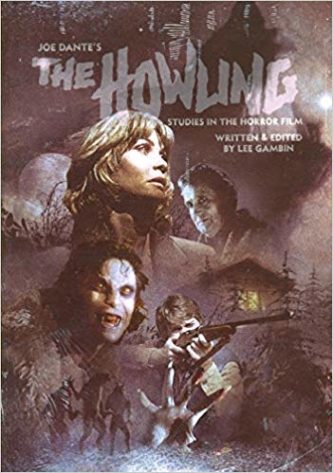 Dante’s 1981 werewolf themed THE HOWLING. I’ve always found that “classic” overrated, which explains why my biggest problem with this study is all the superlatives lavished on the film by author/editor LEE GAMBIN (“remarkable,” “brilliant,” “skillful,” “mesmeric,” “exquisite,” “delectable,” etc). Other than that, though, my complaints are few, as this is as good a book on THE HOWLING as anyone could possibly desire.
Dante’s 1981 werewolf themed THE HOWLING. I’ve always found that “classic” overrated, which explains why my biggest problem with this study is all the superlatives lavished on the film by author/editor LEE GAMBIN (“remarkable,” “brilliant,” “skillful,” “mesmeric,” “exquisite,” “delectable,” etc). Other than that, though, my complaints are few, as this is as good a book on THE HOWLING as anyone could possibly desire.
Gambin offers a scene-by-scene examination of the film from its opening credits to its final moments. Nestled amid Gambin’s descriptions are extensive quotes, taken from interviews with THE HOWLING’S principal cast and crew. Among the interviewees are Dante, producer Mike Finnell, screenwriter John Sayles and actors Dee Wallace, Dick Miller and Belinda Balaski, all of whom contribute behind-the-scenes recollections. Further revelatory info is provided about the groundbreaking special effects and conceptual design, complemented by a wealth of excellent quality stills and reproductions of production sketches and other ephemera, making for a volume that looks as a good as it reads.
AD NAUSEAM: NEWSPRINT NIGHTMARES FROM THE 1980s (1984 Publishing; 2018) consists of a handsomely laid out collection of horror movie newspaper adverts from the 1980s. Back then, in the pre-internet era, cutting and saving newspaper ads was not unusual among young movie buffs; I myself did a fair amount of newsprint clipping in the eighties, although the fruits of my labors have long since been lost. Luckily MICHAEL GINGOLD, a former Fangoria editor and current Rue Morgue contributor, held onto his collection of “Newsprint Nightmares,” many of which are reproduced in this book, complete with opening dates, show times and New York area theater locations.
For movie advertising buffs this book is indispensable, as it contains poster designs you probably won’t see anywhere else. A page of GREMLINS adverts from the summer of 1984 confirms this, containing ads tailored to July Fourth (“Gizmo, Stars and Stripe! The Only way to Spend the 4th of July”), the Olympics (“The unofficial Summer Games Movie!”) and back to school season (“See GREMLINS Again Before You Hit the Books!”). Also featured is an image-free ad boldly proclaiming ALIENS “The Scariest Movie…Ever” and one for JAWS: THE REVENGE in which an enthusiastic Time Magazine review is reprinted in its entirety.
The book concludes with a profile of the Manhattan-based Aquarius Releasing, who were responsible for much of the imagery showcased in these pages. According to Aquarius’s president Terry Levene, the key to a good ad campaign is “strong visual impact,” for which “you’ve got to have blood, action, gore, and, above all, women! If you don’t have those components, you are wasting your time.” That philosophy is certainly evident in AD NAUSEAM, which contains a wealth of gruesome treats for horror fans, as well as a nostalgic glimpse of a long lost era in which newspaper advertising really mattered.
REPRINTS
THE AUCTIONEER by the late JOAN SAMSON is simply one of the great horror novels of the 1970s. This new edition, from Valancourt Books, contains an introduction by Grady Hendrix and an afterward by the author’s husband—it’s the story and characters, however, which truly distinguish THE AUCTIONEER.
It concerns the residents of a New Hampshire Farming community whose lives are upended by the arrival of the titular actioneer. The ensuing events, driven by a deadly combination of greed and gullibility, are horrific, certainly, but also horrifically convincing, not to mention gripping and suspenseful. The book, in other words, often reads like a bleak true life account, but with all the things that make horror fiction great.
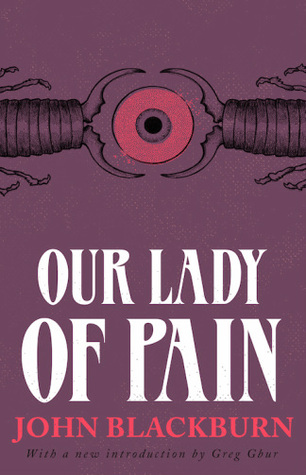 1974’s OUR LADY OF PAIN, another Valancourt Books reprint, is said to be the darkest novel ever written by England’s late JOHN BLACKBURN, who during his lifetime penned quite a few eccentric horror/mystery novels. This one is an ideal example of Blackburn’s unique brand of horror, being lively, entertaining and thoroughly unpredictable.
1974’s OUR LADY OF PAIN, another Valancourt Books reprint, is said to be the darkest novel ever written by England’s late JOHN BLACKBURN, who during his lifetime penned quite a few eccentric horror/mystery novels. This one is an ideal example of Blackburn’s unique brand of horror, being lively, entertaining and thoroughly unpredictable.
It begins as a whodunit, with crime reporter Harry Clay drawn into a series of horrific crimes. Harry teams up with Miriam, a babe doctor who leads him to an old mansion where all the crimes appear to be centered. At this point the story becomes a haunted house chiller, with Harry investigating the abode’s history and discovering that it once housed a little girl who was hidden from the world due to a hideous deformity. Also involved in the proceedings is the specter of the notorious Countess Bathory, who allegedly murdered and bathed in the blood of hundreds of teenage virgins, and a memorably nasty final twist that amply justifies the title.
In its interweaving of history, folklore and the supernatural within a fast-paced mystery framework, OUR LADY OF PAIN is drafted with smoothness and ingenuity. It may be a bit overcomplicated, with what is almost certainly the busiest, most wide-ranging narrative this side of GRAVITY’S RAINBOW, but Blackburn pulls it off nonetheless, and with considerable vigor.
2001’s THE ASSOCIATION by BENTLEY LITTLE, reprinted by Cemetery Dance, contains everything a fan of the author might expect, namely an intriguing premise and absorbing narrative that’s rendered in easy, conversational prose. It’s a traditional horror story in many respects, but the author’s brilliance is in making it seem as fresh and unprecedented as just about anything you’ve ever read.
Barry and Maureen are a young couple moving away from the bustle of Southern California to Bonita Vista, a pastoral community in Utah. The place is governed by an obnoxious homeowner’s association with an extremely rigid code of conduct that seems to change every few minutes. The penalty for non-compliance with these rules are fines—and if those fines aren’t paid even worse punishments are in store. How can Barry and Maureen fight the Association’s imperious leaders, especially since, as Barry begins to believe, they may not even be human?
Enjoyable this book is, but it’s also quite troubling, particularly since its ultra-conservative Association doesn’t seem that far removed from America’s present leadership. Little also takes some well-aimed jabs at the horror community by making his protagonist a writer of scary books who shuns workshops and conventions because he doesn’t like the “petty infighting” among his fellow writers (a complaint I’ve heard from quite a few real-life horror scribes).
2017 BOOKS I MISSED
THE SECRET DIARY OF LAURA PALMER (Audible Studios) is a reasonably enjoyable flashback to the earliest days of TWIN PEAKS mania, courtesy of 22 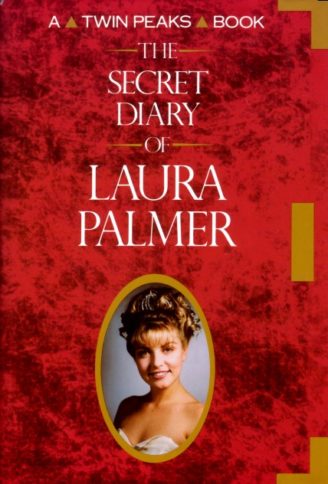 year old JENNIFER LYNCH, that was initially published back in 1990. It turned up again in 2017 as an audiobook read by SHERYL LEE, who played Laura Palmer in the series.
year old JENNIFER LYNCH, that was initially published back in 1990. It turned up again in 2017 as an audiobook read by SHERYL LEE, who played Laura Palmer in the series.
As its title portends, THE SECRET DIARY OF LAURA PALMER purports to be the intimate thoughts of Laura Palmer, the promiscuous cokehead prom queen whose corpse was discovered in TWIN PEAKS’ pilot episode. This diary portrays the darkness of Laura Palmer’s life with uncomfortable explicitness. Prose-wise it’s quite convincing in its evocation of the anger and helplessness felt by Laura, but far less convincing is the voice in which the diary is related, which is far too savvy and world-weary to be believable as the jottings of a small town teenager.
Ms. Lee, at least, provides good, spirited narration (even if she is clearly a bit older than the teenaged Laura), making the audio version well worth a listen–even for those who, like me, aren’t entirely taken with the text.
In the category of Raymond Roussel/H.P. Lovecraft/Clark Ashton Smith/Jorge Luis Borges-inspired oddities, A JOURNEY IN THE PHANTASMAGORICAL GARDEN OF APPARITIO ALBINUS by CLAUDIO ROMO, originally published in Italy back 2016 and reprinted by Gingko Press, definitely stands out. Its overall conception is inspired by Roussel’s LOCUS SOLUS, being, simply, an account of a vast garden “filled with ghosts”—creatures, actually, each of which is given a name, a paragraph-long backstory and a full page illustration.
Among the critters residing in Apparitio Albinus’s garden are “Flavia, the Gynoid Scribe,” a prehistoric female automaton who spends her days writing her voluminous history; “Fishassassins” employed by the race of Tritons to, among other things, incubate their eggs; a “Phantasmagorical Machine” named Faustine that literally absorbs the souls of the people it photographs; and “The Cosmonauts,” a race of ancient extraterrestrial beings who constantly fly their spaceships over the garden.
The illustrations by Claudio Romo are impressively drafted with a good eye for biologic surrealism. Insectoid and fish-like creatures predominate, with a wealth of details that do justice to Romo’s ornate descriptions. Credit must also go to translator David Haughton, who’s up to the challenge of rendering Romo’s adjective-heavy verbiage in English, making for a book with a beauty and strangeness that are unique to itself and a creator who “takes pleasure in publishing the kind of books that I would have always loved to hold in my hands.”
 KEEF by T.W. COAKLEY is the second entry in the RKS Library Editions series of “lost and forgotten masterpieces of drug literature.” This 1897 novel has been reprinted with info on its author’s life and work, reproductions of artwork pertaining to the novel, and an extensive primer on the uses and effects of kif, the highly refined form of hashish that that provides KEEF’S title and motivating agent.
KEEF by T.W. COAKLEY is the second entry in the RKS Library Editions series of “lost and forgotten masterpieces of drug literature.” This 1897 novel has been reprinted with info on its author’s life and work, reproductions of artwork pertaining to the novel, and an extensive primer on the uses and effects of kif, the highly refined form of hashish that that provides KEEF’S title and motivating agent.
As for the novel itself, there’s a reason it’s been forgotten. Once hailed as “one of 1897’s most important publishing events,” KEEF concerns Leon Abecassis, a painter raised in Tangiers, where as a child he first learned of the joys and horrors of kif—or, as it’s spelled here, keef. As an adult he becomes determined to find a way by which “the transient exaltation of spirit which I have so often experienced could be sustained,” and settles on smoking keef. It’s not long before Abecassis becomes a full-blown addict, with the hallucinations engendered by the keef taking on the form of a beautiful woman. Eventually, to his shock, Abecassis meets that woman in the flesh, in the form of a colleague’s sickly wife.
T.W. Coakley, whose only novel this was, is to be commended for the subtlety with which he develops his story. That Abecassis has gone mad from his excessive keef usage isn’t something of which we’re ever concretely informed, although Coakley does provide a number of clues to Abecassis’ true condition that are pointed out by the book’s editor Ronald K. Siegel through footnotes. Beyond that, however, KEEF just isn’t very exciting, being overwrought and melodramatic in a way that fully shows its age. As a historic document it has value, and certainly RKS Library’s design and layout are salutary, but it’s not a book that’s worth going out of one’s way to procure.
Finally there’s DON’T DISTURB THE DEAD (HarperCollins), about the Ramsay brothers, Hindi cinema’s masters of all things horrific. Author SHAMYA DASGUPTA deftly guides us through the Ramsay saga, involving the family patriarch F.U. Ramsay and his sons Kumar, Gangu, Tulsi, Arjun, Keshu, Shyam and Kiran.
F.U. in his early years owned a radio business and dabbled unsuccessfully in filmmaking. The turning point came in 1970, with the F.U. produced EK NANHI MUNNI LADKI THI, an unsuccessful thriller with a shock sequence that according to Tulsi and Shyam brought audiences to life whenever the film played. As Shyam concluded, “In the safety of the theater, with friends and family members around them, people liked the thrill of being frightened. We thought it was worth exploring.”
Their first notable film was DO GAZ ZAMEEN KE NEECHE, billed as “India’s First Horror Movie,” which set the tone for subsequent Ramsay productions like DARAWAZA, SABOOT, HOTEL, PURANA MANDIR, 3D SAAMRI and VEERANA. By the 1990s, however, moviegoers grew tired of the formulaic plotlines and cheap production values of the Ramsay films, and their fortunes declined. In the mid-nineties they migrated to the small screen with ZEE HORROR SHOW, which kicked off a new, though not necessarily better, television-based career path.
This book offers a thorough guide to all things Ramsay. Included are personality profiles of each of the brothers and interviews with several of their stock actors, including Ajay Agarwal, the “Great Ramsay Monster Man,” and Aarti Gupta, the “No. 1 Ramsay heroine,” as well as Christopher Tucker, the British make-up whiz who designed many of the masks and prosthetics used by the Ramsays (but wasn’t credited).
LOOKING FORWARD…
THE BEDEVILLED by THOMAS CULLINAN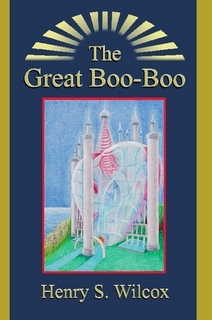
I’ve heard many great things about this horror novel by THE BEGUILED’s Thomas Cullinan, which is set to get its first reprint (by Valancourt Books) since 1979.
THE GREAT BOO-BOO by HENRY S. WILCOX
An 1892 publication that’s said to be “one of the strangest American novels of the 19th century,” reissued for the first time in over a century by Ramble House.
THE NIGHT by PHILIPPE DRUILLET
This is kind of a big deal: the premiere English version of the legendary 1975 psychedelic graphic novel LA NUIT, written and illustrated by the French maestro Philippe Druillet.
THE PRICE OF DREAMS by MARGHERITA GIACOBINO
A fictionalized memoir of the late Patricia Highsmith, written by the acclaimed Italian novelist Margherita Giacobino and published by the ever-adventurous Dedalus Books.
TONY SCOTT: A FILMMAKER ON FIRE by LARRY TAYLOR
A biography of the late Tony Scott, the talented (and troubled) director of TOP GUN, TRUE ROMANCE and many other notable films.
THE ULTIMATE HISTORY OF THE 80’s TEEN MOVIE by JAMES KING
About just what the title says: teen movies from the eighties! Need I say more?
VALERIE AND HER WEEK Of WONDERS by JEZ WINSHIP
One of the most fascinating films of the 1960s finally gets a standalone English language study, courtesy of PS Publishing’s “Midnight Movie Monograph” series.
WEIRD FICTION REVIEW #9
SHAMELESS SELF-PROMOTION ALERT! This, the latest edition of Centipede Press’ WEIRD FICTION REVIEW, contains an article by Yours-Truly. The rest of it (I’m assuming) is also worthwhile.
ZIGOMAR by LEON SAZIE
At last, an English translation of the early Twentieth Century French crime serial ZIGOMAR, which is said to mix elements of Sherlock Holmes and Fantomas.

